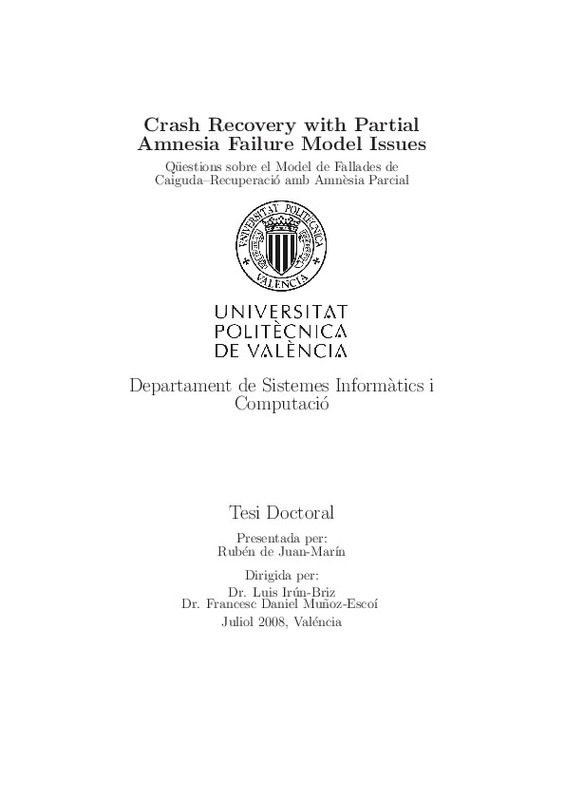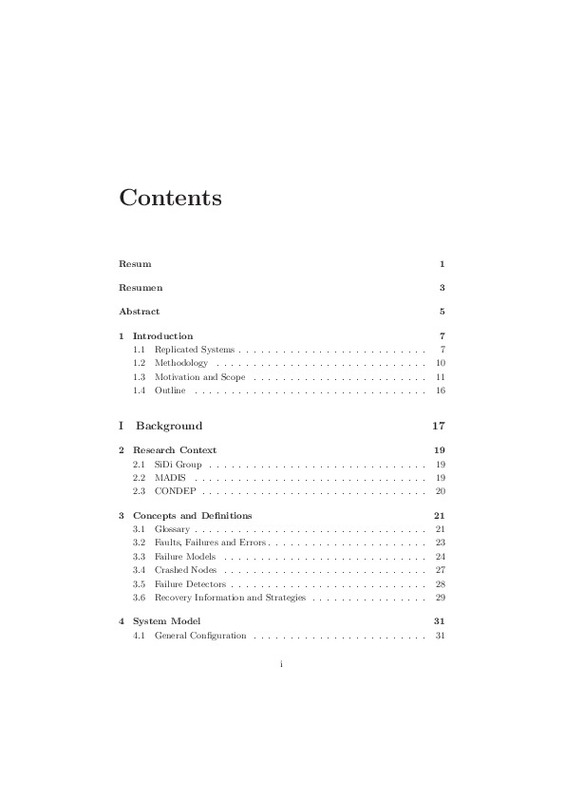- RiuNet repositorio UPV
- :
- Investigación
- :
- Tesis doctorales
- :
- Ver ítem
JavaScript is disabled for your browser. Some features of this site may not work without it.
Buscar en RiuNet
Listar
Mi cuenta
Estadísticas
Ayuda RiuNet
Admin. UPV
Crash recovery with partial amnesia failure model issues
Mostrar el registro completo del ítem
De Juan Marín, R. (2008). Crash recovery with partial amnesia failure model issues [Tesis doctoral]. Universitat Politècnica de València. https://doi.org/10.4995/Thesis/10251/3302
Por favor, use este identificador para citar o enlazar este ítem: http://hdl.handle.net/10251/3302
Ficheros en el ítem
Metadatos del ítem
| Título: | Crash recovery with partial amnesia failure model issues | |||
| Autor: | De Juan Marín, Rubén | |||
| Director(es): | Irún Briz, Luis Muñoz Escoí, Francisco Daniel | |||
| Entidad UPV: |
|
|||
| Fecha acto/lectura: |
|
|||
| Resumen: |
Replicated systems are a kind of distributed systems whose main goal
is to ensure that computer systems are highly available, fault tolerant and
provide high performance. One of the last trends in replication techniques
managed ...[+]
|
|||
| Palabras clave: |
|
|||
| Código UNESCO: |
|
|||
| Derechos de uso: | Reserva de todos los derechos | |||
| DOI: |
|
|||
| Editorial: |
|
|||
| Tipo: |
|
recommendations
Este ítem aparece en la(s) siguiente(s) colección(ones)
-
Tesis doctorales [5389]







![Text file [Text]](/themes/UPV/images/text.png)


